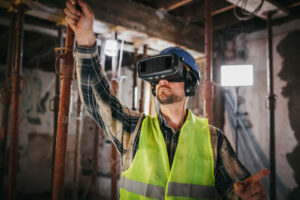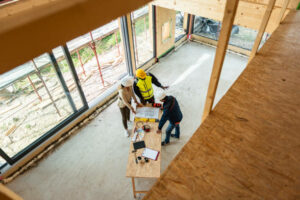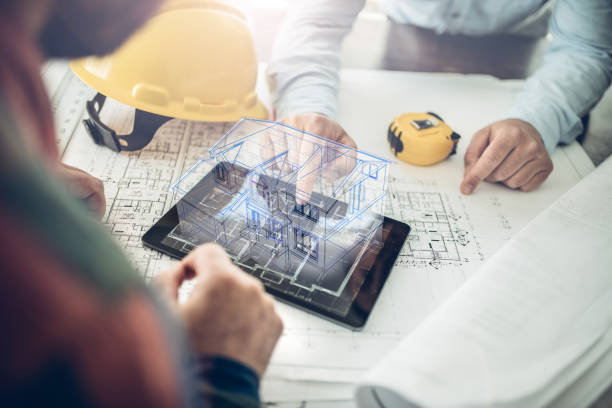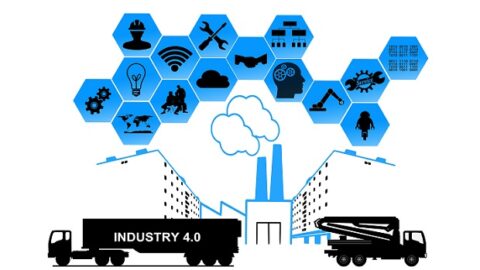Emerging Technology Trends in the Construction Industry
Today’s technology impacts nearly every industry, and construction is no exception. Artificial intelligence (AI) and robotics are making their way into buildings to help the industry’s workers. However, Technology Trends in construction can be fickle, and some trends that catch on quickly may fizzle out just as fast.
Table of Contents
Predicting which tech trends will be here for the long haul can be challenging. Unless you closely examine what’s emerging and how well it aligns with industry needs, it may be difficult to tell what the next big thing will be. Luckily, most technology trends meet the safety, efficiency, and productivity needs of workers above all else.
1. Wearable Sensors

It’s no secret that construction jobs involve numerous safety risks. These jobs are some of the most dangerous in the country. Multiple moving parts, equipment errors, human mistakes, and environmental conditions increase the chances of work-related injuries and accidents.
However, IoT devices among the technology trends and wearable sensors are helping to reduce and mitigate the risks construction workers face. Companies can put sensors within personal protective equipment like noise cancellation headphones and hard hats. These sensors collect data on the use of personal protective equipment and the conditions that exist on job sites.
Say the weather is becoming too hot to continue outdoor work. A sensor will record the temperature and alert the site foreman and worker to seek shelter in a cooler area. Sensors and IoT devices can also access data from weather reports, warning site workers about heat advisories, freezing temperatures, and approaching storms.
Wearable data trackers can help monitor workers’ body temperatures, hydration levels, and movements. If someone becomes unsteady on their feet, that information goes to a manager who can act quickly. They can talk with the individual to see if they’re okay and get them prompt medical treatment if necessary. Wearable sensors also track high-risk job site behaviors.
2. Virtual Reality

It may seem surprising, but futuristic software is making its way into the construction industry. Virtual or augmented reality allows workers to train on equipment before they go to a live job site. Learning how to operate equipment is much easier in a virtual environment and also prevents accidents.
Virtual reality software can provide pointers and training materials while newbies work through different scenarios. Supervisors and managers might also sit with trainees during sessions and provide audible guidance. Another benefit of virtual reality solutions is that they can provide alerts and instruction in real-time.
Virtual reality among the technology trends can also help with designing construction projects. Builders and managers can enter a VR world that has a scaled virtual replica of the project they will be working on. This is called an immersive review, and it can help keep projects on track, as well as problem solve quickly and expertly.
Finally, virtual reality is able to superimpose blueprints and monitor building activities to catch design and construction errors. Constantly consulting a paper blueprint and ensuring actual materials and building activities match up is difficult, especially during a time crunch. Virtual reality prevents costly mistakes and the need to redo critical building components.
3. Eco-Conscious and Prefabricated Building Materials

By 2025, the global construction and building materials market’s net worth will increase to over $1.2 trillion. Building materials like lumber and concrete have traditionally been in high demand for construction projects. However, supply shortages and a need to save costs and increase efficiency are making modular, prefabricated, and eco-friendly building materials more popular.
Industry experts are harnessing the power of 3D printing technology among technology trends to create a modular, prefab, and environmentally friendly concrete formwork system using innovative materials. One of the advantages of 3D tech is that you can load a design into a printer’s software. The printer creates the materials and building sections according to specifications without error.
These prefabricated materials and modular sections still require someone onsite to assemble them. However, the time it takes to complete jobs is much less. Instead of taking months on site, that time can go down to a matter of days. There’s also no more waiting for materials to show up from different suppliers or sorting involved.
Beyond 3D printing technology, 5D building information modeling or BIM tech is emerging. BIM is a way to create a digital version of a building. These digital replicas gather real-time and real-world information to cut down on mistakes and rework. If you’re planning to build a skyscraper on a piece of land, BIM tech can warn you if you need to find another location.
4. Robots and Drones
AI in the form of robots and drones isn’t going to take over the work of humans. But Technology Trends in the construction industry, robots and drones are making jobs easier for human workers. Similar to other industries, robots are taking over repetitive tasks that quickly become tiring or are likely to result in injuries.
If you’ve worked a physical job, you know that the toll it takes on your body can show up months or years later. Personal protective equipment like noise cancellation earplugs and lifting procedures can only go so far. Some tasks are just bound to cause torn ligaments and back problems. Others can potentially expose people to harmful chemicals.
Robots and drones don’t sustain injuries that can hold a company liable for medical bills, lost pay, and emotional distress. Drones can also reach heights and difficult angles that jeopardize human safety and can help fill labor gaps and shortages.
Conclusion on Emerging Technology Trends in the Construction Industry
Technology Trends in construction is increasing efficiency and productivity in almost every area of life, and construction is just one of them. Emerging trends such as wearable sensors, virtual reality, prefab materials, and robotics look like they’re here to stay. That’s because these technologies are increasing safety, helping workers avoid errors, and reducing project costs.
Research on technology and the construction industry has shown tremendous growth since 2020. High growth rates mean the role of technology will continue to increase. With tech, workers can do more with fewer resources. With advanced tech, the construction industry will be able to fill the gaps that humans can’t.

Victor Z Young is a Civil Engineer with 35 years of experience working alongside the executive team of various construction companies. Victor specializes in construction insurance, delay analysis, performance analysis and engineering. He holds a Doctor of Project Management from Northwestern University.










